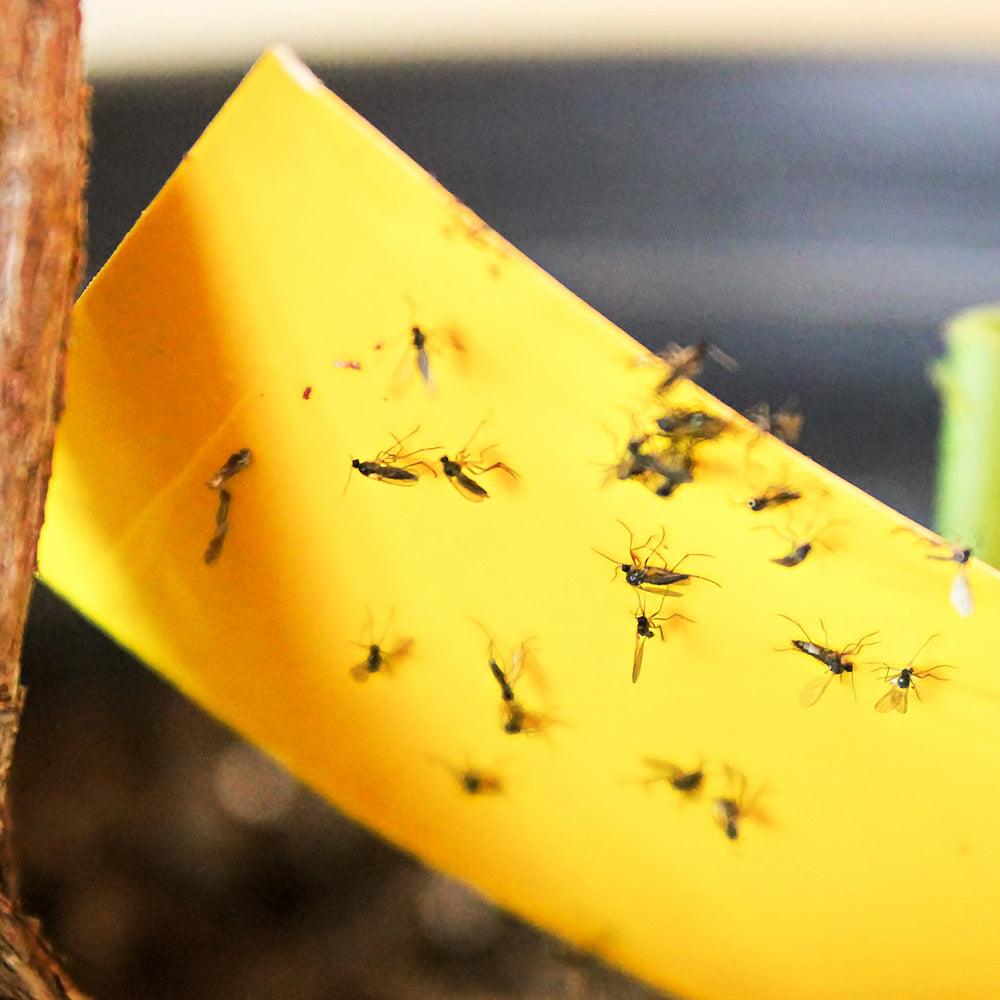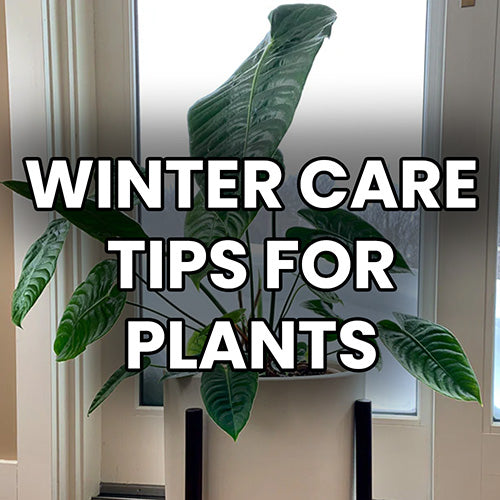
Everything You Need to Know About Houseplant Pests
Share this with friends
Bugs happen. It is inevitable. We love tropical house plants, but sometimes forget that bringing nutrient rich soil inside our homes poses a few challenges.

In this article we will discuss why you will run across pests sooner or later, and how you can get rid of them.
Where Do House Plant Bugs Come From?
A house plant is a complete ecosystem, with its own heat, humidity, nutrient rich soil, and foliage.
Bugs live in all soil and live on all outdoor plants. If you look in an outdoor garden you will see it full of all kinds of life. Plants use the soil to grow. Worms eat and poop out fertilizer which helps the plants. Insects use those nutrients and plant roots to grow their own families. Soil is full of life, and we must remind ourselves of that.
Opening a window in the spring and summer can let a bug into your home. When you or your pets come inside from a walk, bugs are usually hitching a ride. They are easy to unknowingly bring inside, and once inside, they look for a safe home. With soil inside your home, they just found it.
Think of houseplant bugs like fruit flies – no one wants them, but we understand that they do happen, and if they are caught early it is not a problem. Plants are not a set-it-and-forget-it item. They require care and love to grow, which means a quick inspection every now and then to ensure they are pest-free.
How Do Bugs Affect a Plant?

Insects in your home are identical to the ones outside. They lay eggs in the soil of the plant which will hatch. Some lay small eggs on leaves and in the stems of plants. The young will eat the nutritious roots and use up nutrients. The bugs will then release eggs of their own, and the cycle repeats.
Eventually the pests will eat so much of the roots or use up enough of the nutrients in the soil, that your plant will start to wilt or lose its lush green colour. Given enough time, the pests will move on to other nearby plants. When that happens, it is deemed an infestation.
How to Get Rid of Bugs

There are a few insects you may encounter with a tropical plant: aphids, mealybugs, whiteflys, spider mites, and fungus gnats. While each insect will have its own way of getting rid of them, there are two main methods, natural, and chemical.
A natural method is by releasing Beneficial Bugs, which you can read our in-depth article on. At Gold Leaf Botanicals, we prefer to use as many natural methods as possible, so our choice is Beneficial Bugs. It is as simple as adding a small sachet of beneficial bugs to your plant. These “good bugs” are incredibly tiny, and they run around eating the bad bugs. Once out of food, they die. They can only stay on the plant you release them on, so there is no worry. If two plants are touching, they protect both plants!
The chemical methods for pests include water with dish soap, rubbing alcohol, and the last step is buying a pest killer from a garden center.
How to Prevent Bugs, In Two Easy Steps
Step one is inspection. No matter where your new plant comes from, check the soil and the leaves. Give it a look and see if you notice any creatures. If you do, treat it, and isolate it. Read our article on common pests and the best methods for removal here.
Step two is isolation. Plant lovers know this one well. After your inspection, even if you didn't find any bugs, it is always best to isolate from other plants for two full weeks. This is as simple as putting it in a different room. If there were any eggs (which you cannot see with your eyes), within two weeks you will see the adults. After two weeks, inspect it again, and if you still see no bugs, you can add it to your collection of other plants.
Bugs Happen, But We Love Our Plants
Bugs happen, and it's not a big deal. If you own one plant or one hundred, bugs will find a way into your plant. Even if you are as careful as possible, they can fly in a window, or come in on your clothing. Remember, this is a living and thriving ecosystem.
Regular inspection of your plants is always necessary to ensure you catch issues early on. An ounce of prevention is worth a pound of cure.
As always, please feel free to reach out to us using the Contact Us page. We can help guide you through any issues, and help you get your plants back to their healthiest.





